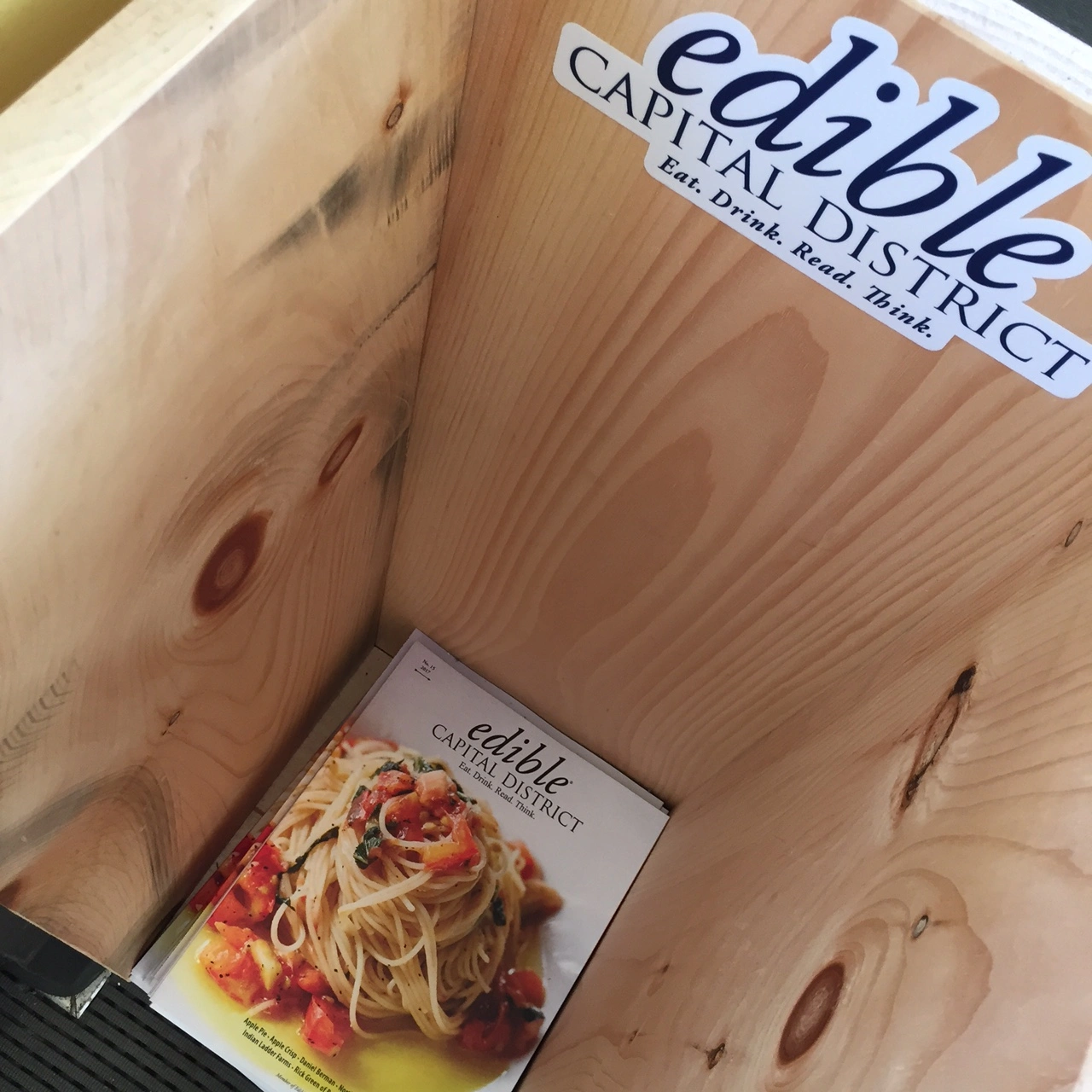Old Bones
Cooking doesn’t have to be a fussy affair. It doesn’t need to take up all your time. You don’t need spend all your time to poring over cookbooks. And what you make doesn’t need to be perfect. The same does not hold true for restaurants. That is one of the things that makes great restaurant meals truly special.
A great restaurant might make a double stock that is so clear one can read the date off a dime in the bottom of the pot.
At home we can make a single strength stock and if it should be cloudy so be it. Don’t get me wrong, if you want to clarify your stocks more power to you. But the added labor and thought shouldn’t keep people from attempting this basic, easy and totally rewarding cooking project.
I say all of this because at least in upstate New York, the weather is getting colder and all of a sudden having a simmering pot of aromatic liquid on the stove for a few hours sounds like a lovely idea.
And what is so great about chicken stock is that it’s the gift that keeps on giving. Plus, provided you have the ingredients on hand, it’s something you can do in the background while you watch a movie, putter around the house, or even read a book by the fire.
The Fussy family generally eats roast chicken once a week. It’s our traditional Friday night dinner, and more often than not we buy it prepared. Luckily we have found a few sources for reasonably happy roasted chickens. They may not be the happy roasted chickens of my dreams, but they are good enough.
After the meat has been picked from the bones, the bones get wrapped up in foil and thrown in the chest freezer. It’s like a chicken graveyard in there. The carcasses pile up until we have enough to fill the stockpot. Five is a minimum, but this week I was able to squeeze in seven.
I know there are some people who save all their food scraps to put into stock. I’m not one of those people. I’m more of a “garbage in, garbage out” kind of guy. Chicken bones are not garbage. They have flavor in them, and they release gelatin into water, which is what makes cold chicken stock congeal into a gel.
Generally I get six to eight organic carrots and two conventional onions. These get peeled and the onions get quartered, and shoved into the crevices of the pot, in between the carcasses. This batch I put in half of a fennel bulb because I thought the added flavor would be delightful.
All of these aromatic vegetables and bones will be even tastier if roasted first. But dealing with a roasting pan and then deglazing it before putting it in a pot is an extra step that could make the whole process daunting. I believe I first encountered the shortcut of roasting these ingredients inside the stockpot directly in some incarnation of Martha Stewart. It could have been the magazine or a cookbook or a television show. Oh, the difficulties of having a media empire.
Anyhow, just make sure your pot doesn’t have plastic handles and put it in a 500-degree oven. Now go do something else. When you start to smell delicious smells you know it’s working. Brown is what you want. Some deep browning is ok, but black is burned.
Have cold water on hand, and for Pete’s sake when you take the pot out of the oven, use mitts. Fill the pot with cold water until the bones are covered and bring it to a boil before reducing it to a lively simmer. While the pot is coming to a boil, you can start adding seasonings. I generally put in a couple of bay leaves, some whole cloves, and whole black peppercorns. This time I got silly and threw in some coriander seeds, some whole white pepper, and a couple of allspice berries. You can also busy yourself at this stage by scooping the scum off the top of the pot.
But once all of that is done, take a break and let time and heat work its magic on your bones and vegetables. Watch a movie. May I recommend Miller’s Crossing. It’s great for fall.
You may be tempted to check on your pot. And that’s okay. You want to stir, stir.
If you are in a rush, give it two and a half hours. If you want to go an hour longer, that’s fine too. The trick is to add the celery and fresh parsley toward the end of the cooking. These get cooked for only about fifteen to thirty minutes brighten up the stock’s flavor, without making it taste like stewed greens.
And then it’s straining time.
I have a fancy chinoise which is one of our most-used wedding gifts, and I break it out for this task. A fine mesh strainer would work well. If you have only a wider mesh strainer, you’re going to have problems, and I’d recommend using some cheesecloth to make sure the stock isn’t chunky.
Cooling the stock is a bit of a challenge. Putting hot liquids in the refrigerator can wreak a little havoc. So I clear away all perishables on the top shelf (heat rises after all) and put my Tupperware of hot stock up there surrounded by ice packs. The food safety people are afraid of all the nasty things that can grow in stock, and maybe you should be too. But this system works for me and I haven’t gotten sick yet.
The next day a layer of fat has formed on the top. You can skim that off, divide the stock and freeze. Me, I further condense it and throw it into ice cube trays. But that’s another story.



My husband is making stock today! Perfect lazy Sunday activity. I LOVE having stock in the freezer. It makes the difference between so-so and delicious sauces, not to mention the delicious soups we can now whip up so easily.
I just made stock Friday night and used it to make a killer potato chowder yesterday. I’ve never roasted the bones first because, well, because I’m super lazy. The roasting in the stockpot trick is genius. Thanks for sharing it!
Miller’s Crossing isn’t a family movie, silly Profusser
Instead of leaving the pot on the stove top, after the boil and skimming I put the pot in a low oven – say 230 or so. Keeps the stock at a low simmer. Not sure if he came up with the idea, but Michael Ruhlman’s blog is where I first heard about that trick. He has an annual “Don’t throw away the turkey bones – make stock” campaign around Thanksgiving.
It must be fall! Sounds like we all spent time this weekend making stock. This time of year the back porch deck serves as my “cool down” spot for the night. Temps were in the 30’s at night this weekend. I do feel more comfortable with that part of the process after the bears den for the winter!
I make “not-chicken-soup” with garlic, paprika and dill. And of course, kneidels. Small ones, the size of ping pong balls. No schmaltz. :)
Wow — that’s way more complicated than the way I make chicken stock — but please!!! don’t put hot food of any kind into plastic!!! Ever!!! I cool my stock in the stockpot, or separate it into stainless steel mixing bowls (the metal conducts the heat out faster). We often put the covered stockpot in the cool fall/winter garage, on the concrete floor, overnight.
To lessen the load on the refrigerator, I leave the stock in the pot and put that in the sink with cold tap water. It will cool surprisingly fast. Change the water as it warms if cooling a large amount. Don’t do what I have done, putting a very hot pot in a snowbank.
It works well, but the stainless steel interior of the pot I used developed a bubble between it and the aluminum bottom.